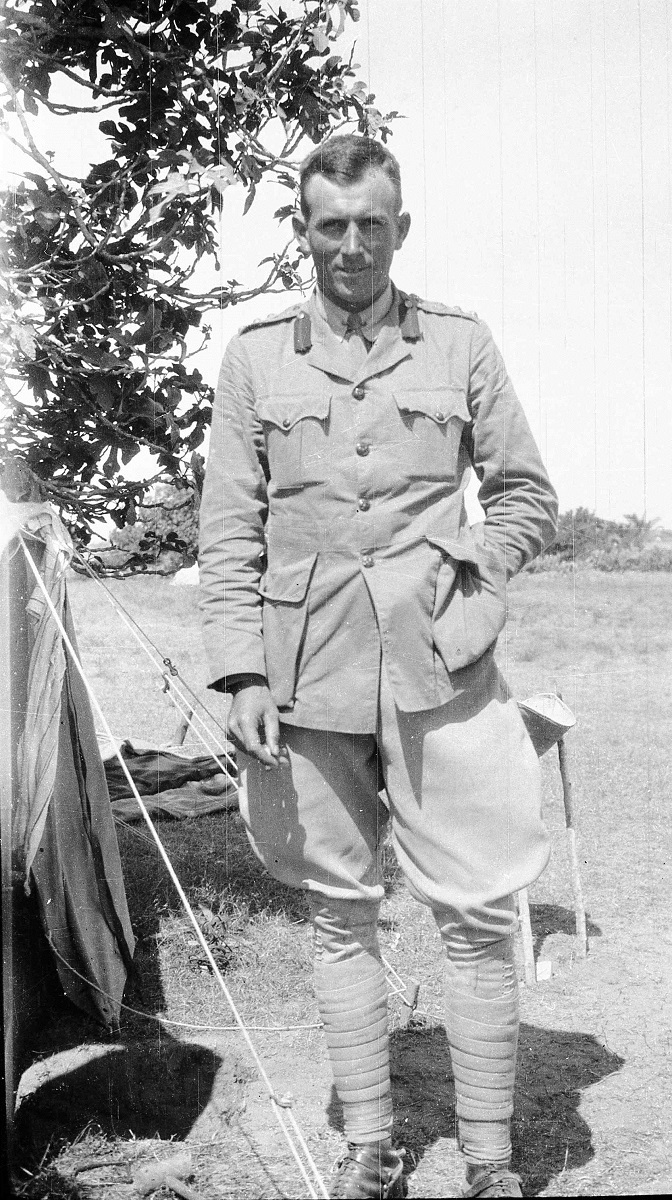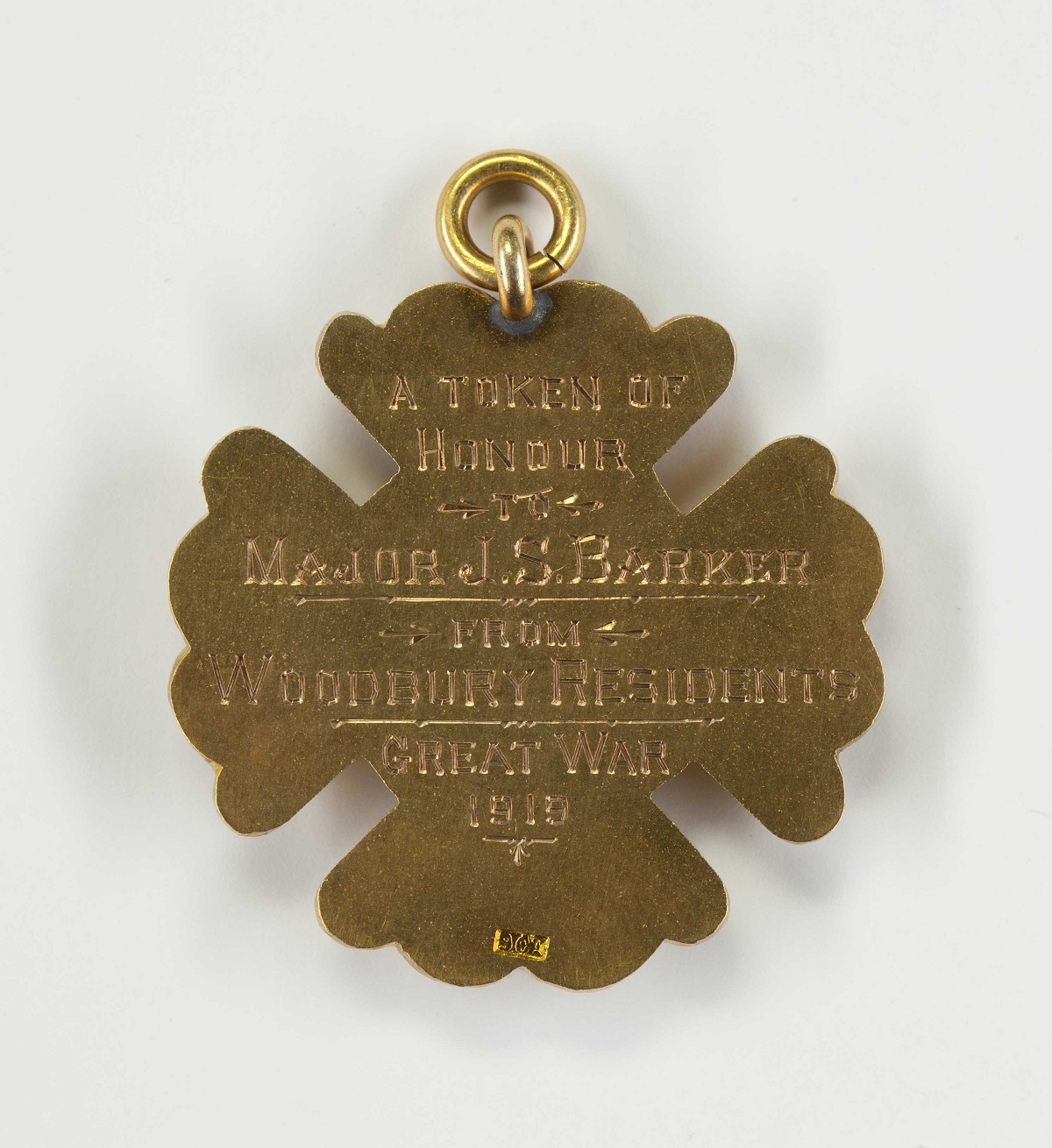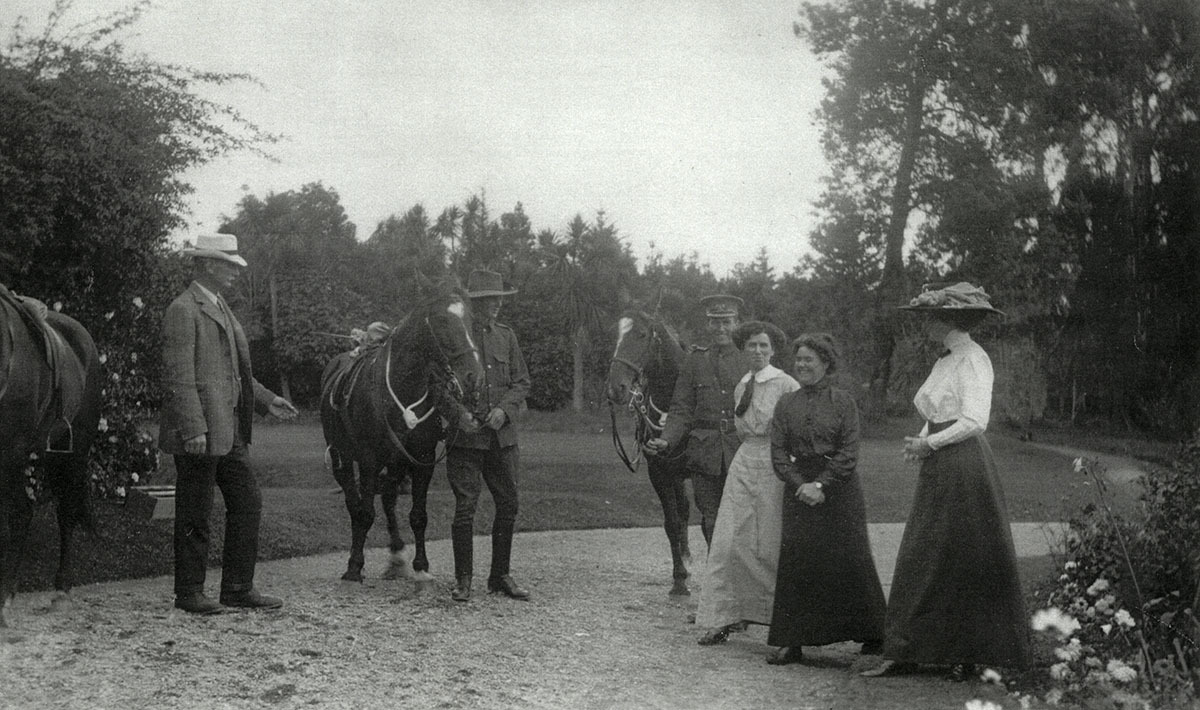Dr Alfred Charles Barker (1819–1873) was a surgeon on board the 'Charlotte Jane', the first of the Canterbury Association ships to arrive in Lyttelton on 16 December 1850. An amateur photographer, he created some of Canterbury’s earliest photographs.
Thanks to the generosity of Dr Barker’s descendants, Canterbury Museum holds hundreds of Barker's photographic prints, negatives and albums, along with family letters and diaries written on board the 'Charlotte Jane' and unique family memorabilia.
A new book, 'From Geraldine to Jericho' tells the story, through letters and diaries, of Dr Barker’s grandson John who served in the Great War. The book is edited and published by John’s grandson, Paul S Barker. Paul writes:
John Studholme Barker left his farm at Four Peaks near Geraldine in August 1914 to join the Canterbury Mounted Rifles. For the next five years he served in a long and bloody campaign against the Ottoman Turks which took him to Gallipoli and throughout the Middle East. He was part of the last contingent of New Zealand troops to return to New Zealand in September 1919.
The Middle East campaign is a little-known chapter of the Great War, despite more than 500 New Zealanders losing their lives. Fortunately, John left a rich collection of letters, diary notes, maps and over 1,000 photographs many of which he had taken himself. John had a strong eye for detail and, as an officer, got a great view of the campaign with all its trials and tribulations.

The horses of the Canterbury Mounted Rifles were central to the Regiment’s identity and formed a very strong bond with their riders. John took two of his own horses to the Great War, both of which were probably put down. After Turkey surrendered in October 1918, 2,500 New Zealand horses were still in service in the Middle East. Despite their long and faithful service only one of these New Zealand horses made it home.
After the war’s end New Zealand’s mounted troops remained in the Middle East. In late 1918, John and a contingent from the Canterbury Mounted Rifles revisited the Gallipoli battlefields with the difficult task of burying the remains of their fallen comrades. They then went back to Egypt in early 1919 to suppress nationalistic riots. It was indeed a long war for the men from New Zealand, particularly John who left with the first contingent in 1914.

This was a war that truly shaped a generation. John’s letters tell of many Canterbury Mounted Rifles horsemen who fell or were sick or wounded. In his own family of eight, five of his siblings also served in the Great War including his brother Paul who lost his life at Passchendaele in October 1917.
As we commemorate the centenary of the Great War From Geraldine to Jericho provides a fitting tribute to the New Zealand men and their horses who served in the Middle East. From Geraldine to Jericho: John Barker and the Great War is self-published by Paul S Barker and can be downloaded here. Copies are available from the Museum Store for a limited period.







